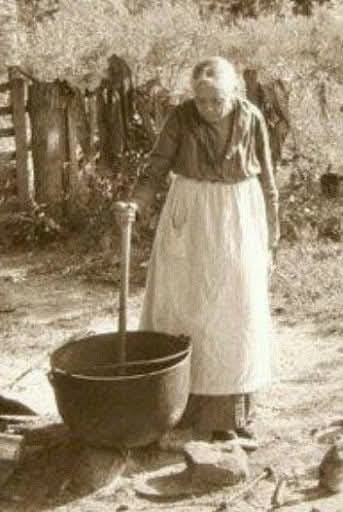Up until the 1900s, many people in the Appalachian hills relied on making their own soaps. Soap making season usually coincides with hog killing season, on account of needing the hogfat, to render into lard, to make the soap. While lard was the main ingredient in traditional Appalachian soaps, lye was also an essential ingredient. Lye was necessary for a chemical process called saponification, or in other words, turning the lard into soap. Lye was usually obtained through a method that called for collecting rainwater in an ash hopper and filtering it through wood ashes, the resulting liquid being lye. The lye, lard, and water would all be boiled together until it thickened, and left to set and form soap that would later be used for everything from personal hygiene, to laundry. Due to isolation and poverty, it was essential in Appalachian culture to learn to respect the land, flora, and fauna by utilizing what the land provides around you, and to not waste any part of the animals you sacrifice. Creating homemade soap from hogfat, rainwater, and wood ashes is a great example of that, and a tradition that is still in practice today. Soap may seem like a simple luxury we don’t give a second thought to, today, but it also reminds me of the resilience and determination of our ancestors when I see photos like this one.
